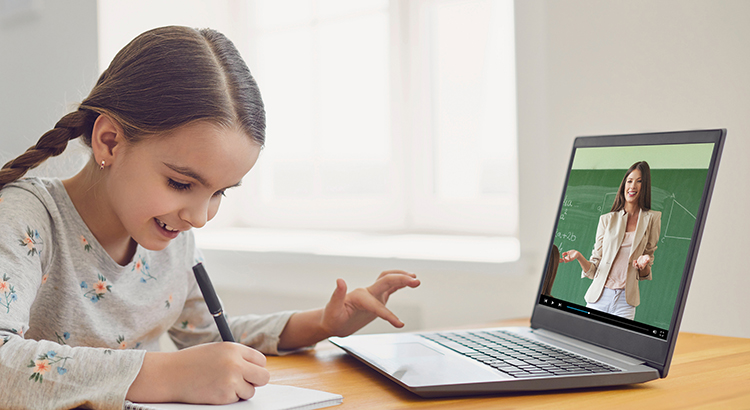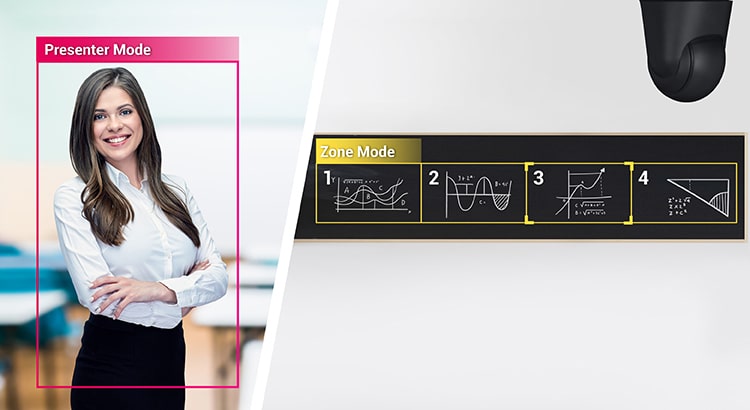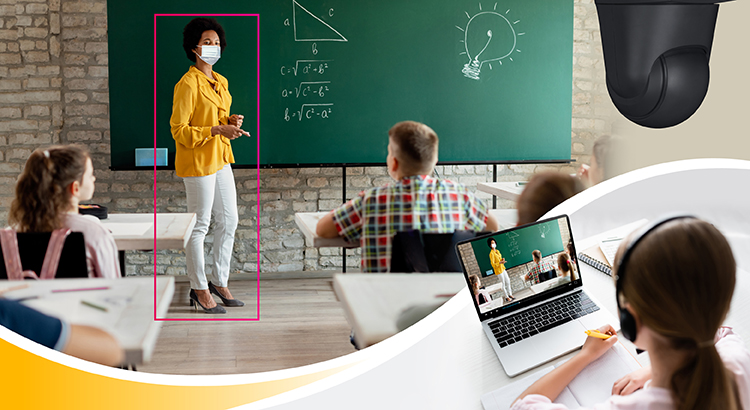One of the biggest challenges schools face today is making distance learning as effective and engaging as in-class learning. Traditional audiovisual content is passable for temporary solutions, but the recent COVID-19 pandemic has exposed the need for a permanent fix. Camera tracking technology is an obvious answer.
Tracking technology is common in the Pro AV industry for broadcasting major stage performances, auditorium lectures, and sports events. But when complicated PTZ cameras and broadcasting configurations are applied to small-scale productions in K12 classrooms, it creates some issues.
First, there’s a learning curve with most Pro AV products that most teachers don’t have the time to overcome. Also, tracking cameras designed for large-scale productions tend to be too expensive for the average K12 budget.
Here at AVer Information, we saw the need for a tracking camera designed specifically for K12 distance learning needs and developed the innovative new DL30 Classroom Tracking Camera.
To give you an in-depth look at why the DL30 is your best bet as an auto tracking solution for K12 classrooms, we interviewed AVer Product Manager Kiki Xing. Here’s how our conversation went:
Q: Why is tracking technology important for classrooms?

A: “There are several reasons. First, other PTZ cameras usually require another person to operate the camera for the teacher. But with auto tracking technology, the teachers can do it themselves. The second reason is that COVID-19 has made distance learning a trend. So, schools that have an auto tracking camera can keep their classes going as usual, even when physical schools are closed. The last reason is that with auto tracking technology, teachers can also record their classes. Students can use the recording to review the lesson any time after class.”
Q: Can you tell us anything about the development process? What challenges did you face, and how did you overcome them?
A: “I have to admit, there were some challenges. First of all, I was a teacher before, so I know that when teachers face technology, they have different levels of understanding. Generally, they do not want devices that are complicated to operate. So, the crucial challenge was how to develop professional functions that are also easy to operate. Take tracking for example. The professionalism is how the tracking performs, how accurate the tracking is, and how stable the image is. But we were able to make the whole setup process very easy. To turn tracking on and off or switch the tracking mode, you only need to use the remote control. You don’t need to go through advanced settings on a web UI.”
Q: Is this technology too expensive for K12 budgets?
A: “We know that K12 budgets are different from higher education or other industries. We do want K12 schools to enjoy tracking technology, but we know they need to be able to afford it. So, when we developed this product, we removed some Pro AV functions that aren’t useful for K12 users so that we could lower the cost.”
Q: How does the technology work? Is it hard to operate?
A: “The DL30’s remote control is a very good example of how we tried to develop this product to be as user friendly as possible. Our remote control for our Pro AV cameras has 45 buttons. It’s necessary for professional Pro AV users, because they have several things they need to set up. But for a classroom, you do not want the teacher to have to set up too many things; otherwise, they will just give up. They just want intuitive products that are easy to operate.”
“With that in mind, we simplified the DL30’s remote control. The very first time users look at it, they can recognize what the buttons do. Also, there are only 32 buttons, since we eliminated unnecessary functions. For example, the Pro AV remote offers different speeds for zooming. But how can teachers understand what speed they need? My idea was to design a default speed for the teacher so they can just zoom in and out. But if they do use the speed for a while and realize it’s too fast or slow, we do still have the web setup, so they can ask their IT staff to change it for them.”
Q: How are schools currently using tracking technology? Is it common or is it taking time to catch on?

A: “There are two main user scenarios. When users want students to focus on the lecturer, they can use presenter tracking. But if the content behind the presenter is more important, they can just switch to zone mode.”
“Schools are gradually adopting auto tracking technology. It’s a new thing for a lot of teachers.”
Q: Can you tell us anything about the physical design of the camera?
A: “On most Pro AV cameras, the camera only tilts down 30 degrees, but our DL30 tilts down 90 degrees. This is because we had some requests from some schools for a privacy mode.”
“Most teachers do not turn off the camera when they leave the classroom. Users said that during breaks some students will make faces at the camera, because they feel like it’s still watching them. The DL30’s design solves this problem. If you short press the power button on the remote control, the camera will tilt down 90 degrees and the audio will be muted. Then, when the next session starts, you can just short press the power button again, and it will return to active status. Privacy mode doesn’t completely turn off the camera, so you don’t have to worry about setting up everything again.”
Q: What sets AVer tracking technology apart from the competition?

A: “What sets us apart is our Human Detection tracking. Since the tracking is based on the human form, it works even when tracking targets have face masks on. And we found in testing that even in yoga classes, when the instructor is lying down, it can still track.”
“Another feature that stands out is remote control. If you’re using our software, you can access a Click & Track function that lets you switch the tracking target with a single click. Also, when you activate Click & Track, you can see a frame around the target. Sometimes when you activating the tracking with the remote control, it’s not really easy to see who is being tracked. But if you use Click & Track, you can easily tell by looking at the frame on the Web UI or software. Our competitors do not have these features.”
Q: do you think hybrid teaching is a fad or a long-term solution?
A: “I think before COVID-19 distance learning was already gaining popularity. Now schools feel like they need to prepare, especially in places like the US and Europe where the pandemic is more serious, and lots of teachers and students can’t go to school as usual. So, I believe hybrid teaching is going to become the norm, because people realize that if there’s a second round of the pandemic, they need to be ready. I believe it’s going to stay, but it depends on how different countries activate this teaching method.”
Q: What advice do you have for educators who wonder if they should use this technology?
A: “I would suggest first of all that it’s always good to have an open mind—don’t be afraid to learn something new. You may initially feel intimidated by this new technology. But once you learn how to use it, you’ll find it to be convenient and helpful for teaching. All you need to do is take the very first step. We did our homework and made it easy to set up so you can just teach naturally.”
Camera tracking technology has been around for a while now, but now it’s finally being tailored to the K12 classroom. Click the button below to learn even more about what this technology can do for you.